The New Breed of Filmmaker, Content Consumer in 25 Years
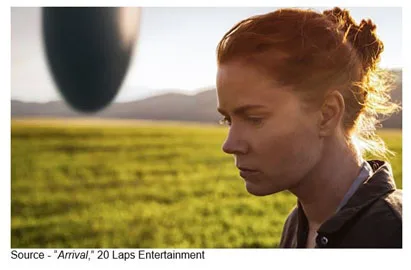
Arrival isn’t just a movie, it’s like art films I used to view during college with underlying thoughts, meaning and ideas you had to dig for and think about.
It made me think of the state of the M&E (media & entertainment) industry…” Even in our world of instant and ubiquitous communication, we have fear and distrust of newcomers and each other.”
Everything is changing at the speed of light … everything is in flux … everything is play when it comes to creation, delivery and consumption.
As long as you understand what the content industry will be like in 2041 – 25 years from now, tomorrow will take care of itself.
2041 Snapshot
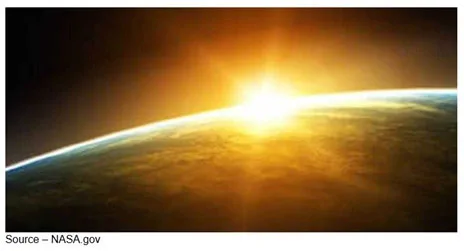
Overview of 2041:
- The world population will hit 9.2B (up from 7.4B in 2016).
- There will be about 6B Internet users with 1Gbps standard.
- 50 percent of the 4.5B population of current undeveloped countries will be connected with tremendous political and economic impact.
- Electric vehicle sales will hit about 20.5M.
- Driverless cars will be expansive in urban markets.
- Yottaflop supercomputers will be humming.
- India’s economy will rival China’s and the U.S.
- There will be fusion, orbital solar power.
- People will control/change memories and personality but men still won’t understand women and women will still be shaking their heads.
- Money, resources will be focused on education, healthcare, transport, environmental programs; improving living standards; economic opportunities.
- Power over wireless will begin replacing the aging power grid.
- Implantables, wearables will have virtually eliminated communications devices.
- Manned trips to Mars will begin to reach affordability.
- Male, female salaries will be approaching parity.
- Everything/everyone will be connected and personal data will still be personal but easily shared/used.
- To eliminate cybercrime, every person will have a personal digital identifier to ensure accurate, precise digital identity.
- It will be 50 years since 1st Mac was introduced.
- Content providers will deliver information/content you want, no matter where you are.
- We will produce, process, disseminate and consume as much as 4,0004 kilobytes, (two yottabytes) of data annually.
- Personalized AI-based data analysis/decision systems will help you do what you want in your professional and personal lives.
Creators
By 2041, not even your grandparents will be able to tell kids about the days that movies were sprocketed, 35mm moved up to 70mm and stereo sound was becoming popular with just an
analog trace on the edge of the film.
Today’s digital natives will be Millennials in 2041, carrying forward the habits they developed in their early years.
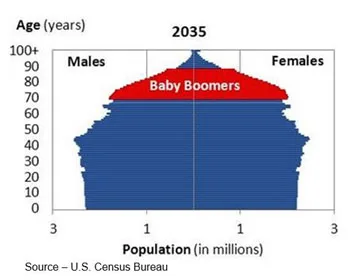
They will simultaneously create content, edit it, post it on social media and carry on conversations with a constantly changing pool of “friends”.
They will literally be documenting/uploading/sharing everything–instantly. And they will lose interest just as fast.
Social media video services such as Facebook Live, YouTube Red, SnapChat, Instagram, Tencent, Alibaba, TaTa Sky, HDTV India and other online services will serve as repositories and distributors of 10s of thousands of hours of content shot by Millennials (used to be Gen Z but they got old) and Gen Alphas) and presented every hour using 8K camera screens.
The 1-5-minute life/impulse moments will be delivered to people based on their interests, mood, needs and curiosities supported by very appropriate/personal ads.
Or, individuals will avoid ads by paying a reasonable (modest) streaming fee
Either way, all of their personal data will be tracked, compiled and used but that will be of little concern 25 years from now.

The rapid-fire, short attention span viewing may appear to be the death-knell of professional filmmakers but it will actually open new opportunities for visual storytellers and creatives as they shift their focus, attention and work.
There will still be a few studios around producing horrendously expensive (hence fewer) 32K, 120fps, even higher dynamic range zombie, horror (Friday the 13th 10) films and sci-fi (Star Wars 18) as well as sagas that enable you to imagine/experience life in the 22nd century on other planets.
Communal venues such as theaters will have all but disappeared because like-thinking people anywhere will be connected and will share the most minute details/excitement of the film.
Skilled, fire-in-the-gut storytellers (about 20,000 Indies worldwide today) will be using 16K UltraHDR VR cameras to create 10-30-minute serialized content – documentaries, informational/educational material and pure entertainment.
The good news is filmmakers will have more outlet options to monetize their activities:
- Sale or shared revenue with social media streamers like YouTube Red, Facebook, TaTa Sky, others
- S/AVOD (syndicated/advertising video on demand) services – Amazon, LeEco, Netflix, Disney with customized – content/price – viewing bundles

In addition to the conventional 16K ultra high dynamic range 22-channel surround sound fare, there will also be a refined immersive VR/AR (MR – mixed reality) films established and shot by filmmakers. Viewers will then play an active role in determining the flow and direction of the content, drawing in and dispensing them with real and animated characters.
While the ability to stream the content would be impossible over today’s broadband and Wi-Fi new codec solutions, 5G wireless and the widespread availability of reliable 500+ Mbps network connectivity; video material will be enjoyed beautifully.
Thanks to the rapid development and introduction of AI-based content and DAM (digital asset management) solutions, content will be personalized and managed.
For professional filmmakers, AI-based solutions running on IBM Watson-type platforms will be closely tied to content metadata throughout the production process.
Piracy will no longer be a were concern because content will be tied back to the specific storyteller.
As a result, individual “creators/modifiers” will be able to be compensated electronically and automatically for their efforts.
You won’t have to choose whether you’re watching on your 16K/HDR TV in your living, family, media or bed room; on your communications device(s) or in your mode of transportation.
A fixed screen will be something you only see at your grandpa’s house who stubbornly resists moving to a newer, better environment.

Screens (with cameras) will be everywhere – office/home surfaces, modes of transportation, everywhere as in Minority Report. They may not be glass as in Corning’s YouTube videos – A Day Made of Glass – but the AI-based content delivery system will be tracking you, gathering information on what you want and need at any given time. New services to negate your presence will be available, but tracked.
TV channels will take their place in the evolutionary history of content (along with set-top boxes and apps) with personal channels built around individuals (and their constantly changing communities) likes, needs, interests.
Want some real alone time?
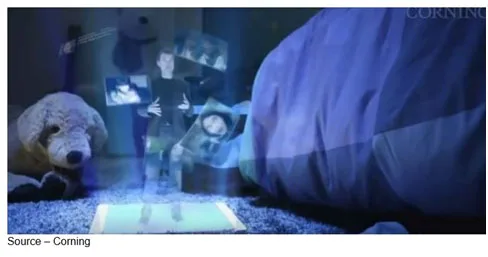
“Tune in,” your always available and your personal screen to enjoy a holographic story, challenge yourself with an immersive MR adventure or experience new places, new activities.
Want some content for a few minutes or an hour? Just say the word and the content system will deliver your channel instantly through intelligent meta-data resourcing.
Content management firms including studios, OTT delivery services (AT&T, Verizon, Rogers, Turner, Viacom, AMC, NBC, Univision, MediaCorp, CCTV, Colors Odia, China Telecom, Telstra, AWS, AZURE, Tata and other local, national, international carriers) will store, stage and distribute content no matter where you’re at from your interest bundle (subscription or ad supported)
All of the providers will use AI-based DAM (digital asset management) and analytical/accounting solutions that intelligently learn your entertainment tastes to refine offerings when you want to take a mental break.
It’s not everywhere, anywhere, everyone streaming entertainment, it’s individual content that ensures everyone is happy with the results – content owner, content distributor, advertiser and viewer.
The Big Hurdle
The constant production of 10s of thousands of hours of 8K, 16K and VR/MR content will require a tremendous amount of storage when you consider that some of the 16K, VR/MR 30-minute films could require petabytes of storage.
It means there will be a robust demand for storage as filmmakers, content managers and file distributors produce, gather and archive content as well as the data on the content and viewer from the four corners of the globe.
“Tomorrow’s content production will produce digital assets that are both deep and wide, said Allan McLennan of the PADEM Media Group. “The emerging AI solutions will track all of the content and predict the viewer’s desires based on prior behavior and comparing it with video assets that are available down to the frame level.
“The assets will be stored in almost any cloud service but will then be staged closer to the viewer in a personalized, private, detailed manner,” he continued. “When the individual is ready, the content will be accurately, transparently and instantly served up because of the learned ability of the AI solution.”
The software, hosting and storage will move from single servers and monoliths towards distributed systems with fog-hosting (decentralized networking) that provides greater efficiency, reduced pressure on the networks and an improved user experience/enjoyment.
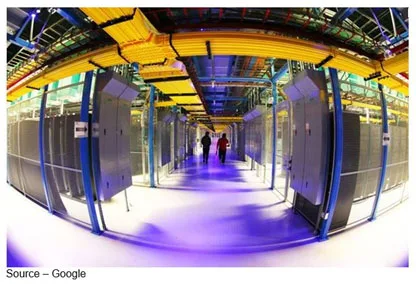
To meet the demand, cloud service organizations – Amazon, Microsoft, IBM, Oracle, Apple, TaTa and others have added data centers capacity while refining advanced storage management software and working on next-generation storage devices.
By 2041, tape and HD technology will have reached end-of-life as engineers refine holographic and DNA storage technologies to provide the best balance of capacity/performance/cost for the service provider.
Holographic uses laser beams to store computer-generated data in three dimensions. Data is recorded throughout the medium and multiple images can be stored in the same area (light at different angles) and provides high content density in small devices.
One gram of DNA has the potential of storing 1ZB of data that could be stored, saved and used for up to 1,000 years.
Taking advantage of the speed, Moore’s Law and capacity growth, flash-based memory will be used to store the content in decentralized fog or cloudlette centers.
This will provide the optimum balance of near-instant content delivery (folks will have zero wait tolerance and minimal attention span by then) as well as high-capacity, low-cost content preservation.
Thanks to the refinement of personal identity tracking and AI-based content management/delivery, channel surfing and buffering will be things your grandparents talk about in 2041.
It all sounds like a lotta’ work to kids just starting out in their filmmaking career, but it will provide an amazing level of cultural engagement once they embrace it.
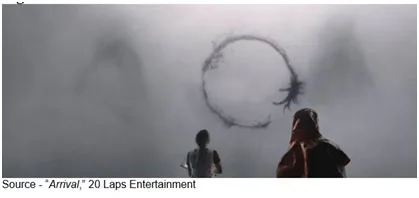 And why would anyone want to sit for an hour to watch something when you could busy yourself doing multiple things and your content would just be with you.
And why would anyone want to sit for an hour to watch something when you could busy yourself doing multiple things and your content would just be with you.
Way back then, it was probably why Dr. Louise Banks said in 2016, “This is just a way to force us to work together for once.”
# # #